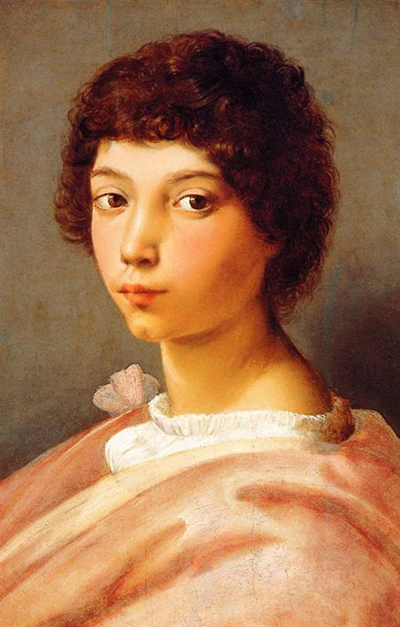Portrait of a Young Man by Raphael is often considered as a self-portrait. The Nazis from Poland stole the painting during World War II.
Most historians regard the painting as the most important picture missing since the Second World War. It's suggested that, if it is found, the portrait of a young man would be worth more than 100 million USD today. It's in oil on panel, most likely from 1513-1514. The identity of the subject is not verified, but many have regarded it as a self-portrait of Raphael.
Specialists perceive the facial features as being compatible with, if not certainly similar to, the only indubitable Raphael's self-portrait in his fresco called The School of Athens found at the Vatican, which Vasari identified as such. If it's a self-portrait, then no hint is provided about the profession of Raphael. Before it disappeared, no colour photographs of this picture had been made. The colour image was artificially coloured.
In 1993, at the start of the Polan Nazi invasion, the family patriarch Augustyn Józef Czartoryski (Prince Adam Ludwik Czartoryski son) rescued many pieces from the Kraków, Poland-based Czartoryski Museum, including a Rembrandt masterpiece, Lady with an Ermine by Leonardo and Raphael's Portrait of a Young Man. This collection was hidden at one of the homes in Sieniawa. It was later found by the Gestapo, who was working for Hans Frank, an appointee of Hitler as the General Government governor.
From the collection, these 3 paintings decorated Hans' residence in Kraków, Poland before they were taken to Dresden and Berlin, to be part of the collection of the Führer at Linz, arranged by Dr Posse, Hitler's plenipotentiary. In January 1945, Hans brought the portraits from Germany to Kraków, Poland for his use at the royal castle residency called Wawel Castle. That's where Raphael's painting was last seen. Later that month before the Soviet offensive, when the Germans left from Kraków, Hans took the collection with him to Silesia, then to his Neuhaus am Schliersee villa.
On 3 May 1945, the Americans arrested Hans, pending trial for extended war crimes. In 1946; he was executed. The representative of Poland at Retrieval of Works Art Allies Commission found some of the paintings that he had stolen, and they claimed them on Czartoryski Museum behalf. However, Raphael's portrait plus 843 other artefacts were not found from storage.
As a High Renaissance portrait painting, Raphael's emphasis on softened form, erect poise, texture and gesture all represented cultivated advanced Mannerist expression with the noble class attributes in a style that spread across southern Italy after the death of Raphael. The wavy hair and textural details of the wall strike a Neo-Classical, which is a sensitive balance between nature and real humanity. They extend gestures that were seen in the earlier female hand position to stress the role of a man as a humanist who has travelled widely.
It's probable that the studious approach of Raphael to idealised human proportion representation was based mainly on his studies of military and ancient athletic heroes in Classical sculpture like Augustus of Prima Porta and Doryphoros.




